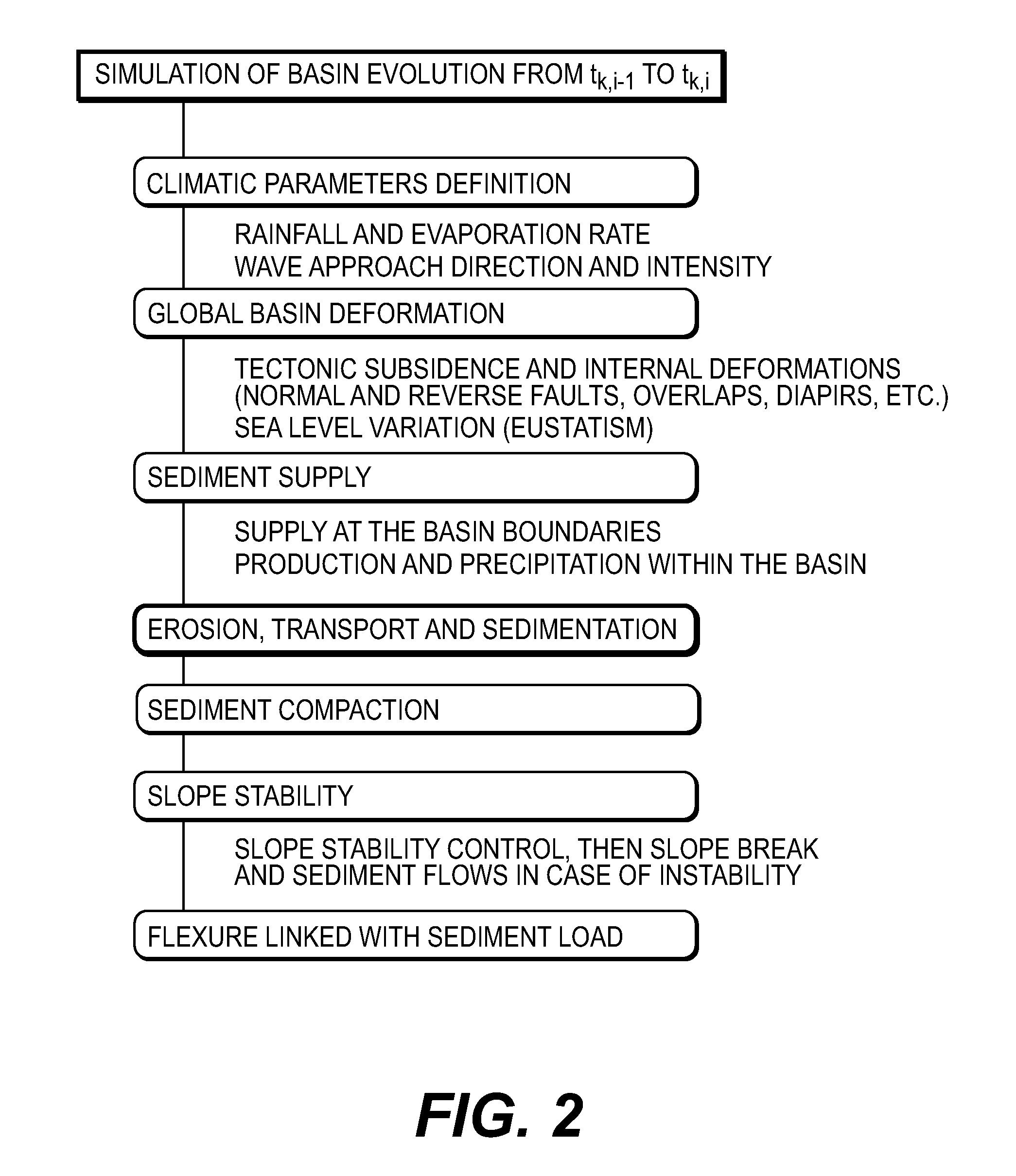Method of developing a sedimentary basin from a stratigraphic simulation of multilithologic filling taking account of fine sediment transport
a multilithologic filling and stratigraphic simulation technology, applied in the field of petroleum industry, can solve the problems of inconvenient modeling of sedimentary basins, inability to study the evolution of sedimentary systems over geologic time, and models that are ill-suited for simulation of the transport of fine particles
- Summary
- Abstract
- Description
- Claims
- Application Information
AI Technical Summary
Problems solved by technology
Method used
Image
Examples
Embodiment Construction
[0045]The method according to the invention allows generation of an image describing the geometry of geologic layers forming a sedimentary basin and the distribution of the sediments within these layers, with a goal of developing the sedimentary basin. Development can be oil exploration during the study of boundary zones, evaluation of new fields, characterization of oil reservoirs or development through hydrocarbon extraction from these reservoirs. Development can also be geological storage of gas and fluids such as CO2 or hydrogen.
[0046]The image is generated by a computer-implemented stratigraphic simulation method. The simulation method according to the invention allows obtaining a deterministic stratigraphic simulation over long time periods (on the order of ten thousand years to a hundred million years) and large distances (some tens to hundreds of kilometers), in 2D and in 3D, and to characterize the geometry of the sedimentary layers and the distribution of the fine and coar...
PUM
| Property | Measurement | Unit |
|---|---|---|
| fall velocity | aaaaa | aaaaa |
| erosion rate | aaaaa | aaaaa |
| velocity | aaaaa | aaaaa |
Abstract
Description
Claims
Application Information
 Login to View More
Login to View More - R&D
- Intellectual Property
- Life Sciences
- Materials
- Tech Scout
- Unparalleled Data Quality
- Higher Quality Content
- 60% Fewer Hallucinations
Browse by: Latest US Patents, China's latest patents, Technical Efficacy Thesaurus, Application Domain, Technology Topic, Popular Technical Reports.
© 2025 PatSnap. All rights reserved.Legal|Privacy policy|Modern Slavery Act Transparency Statement|Sitemap|About US| Contact US: help@patsnap.com



